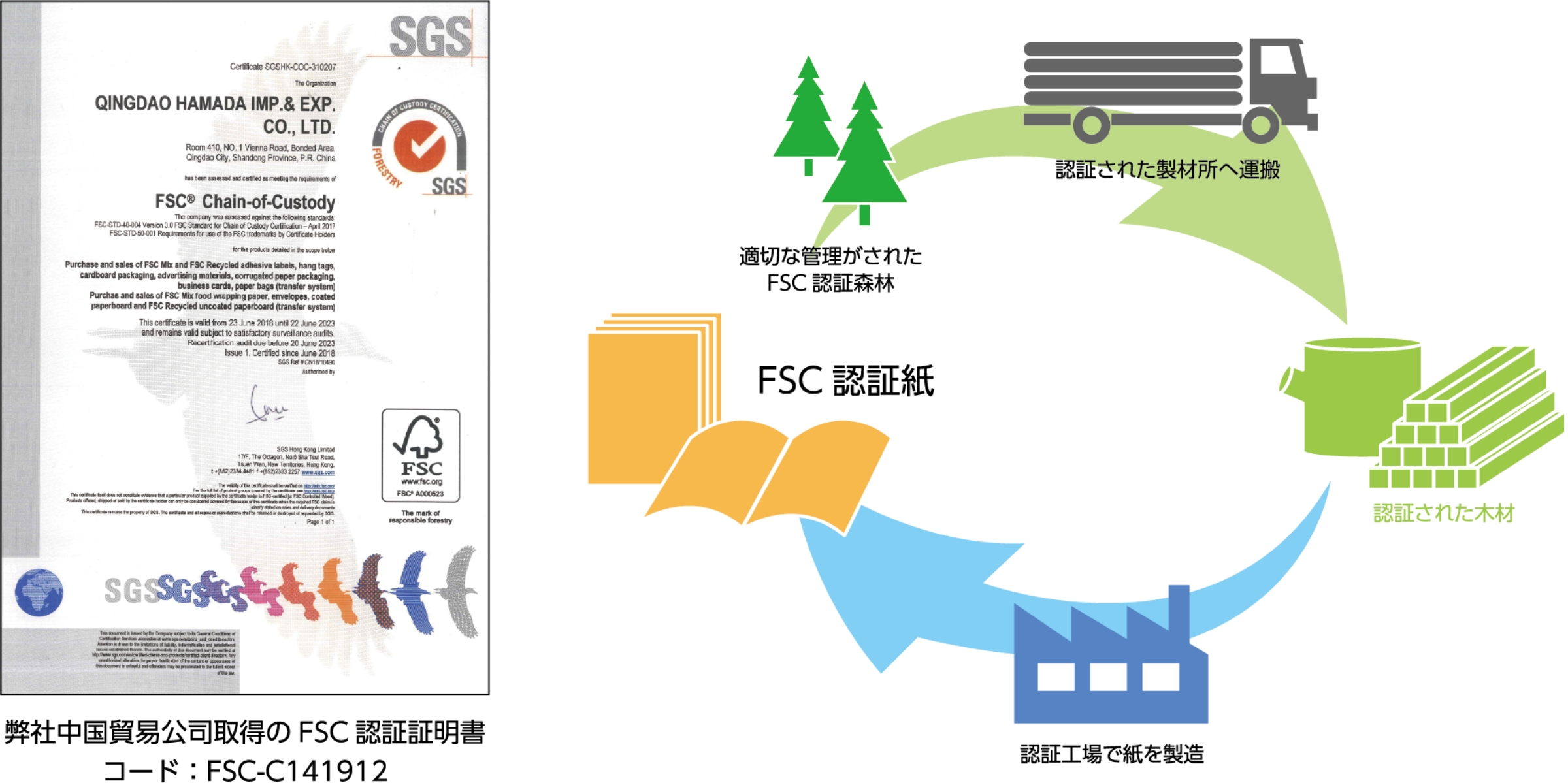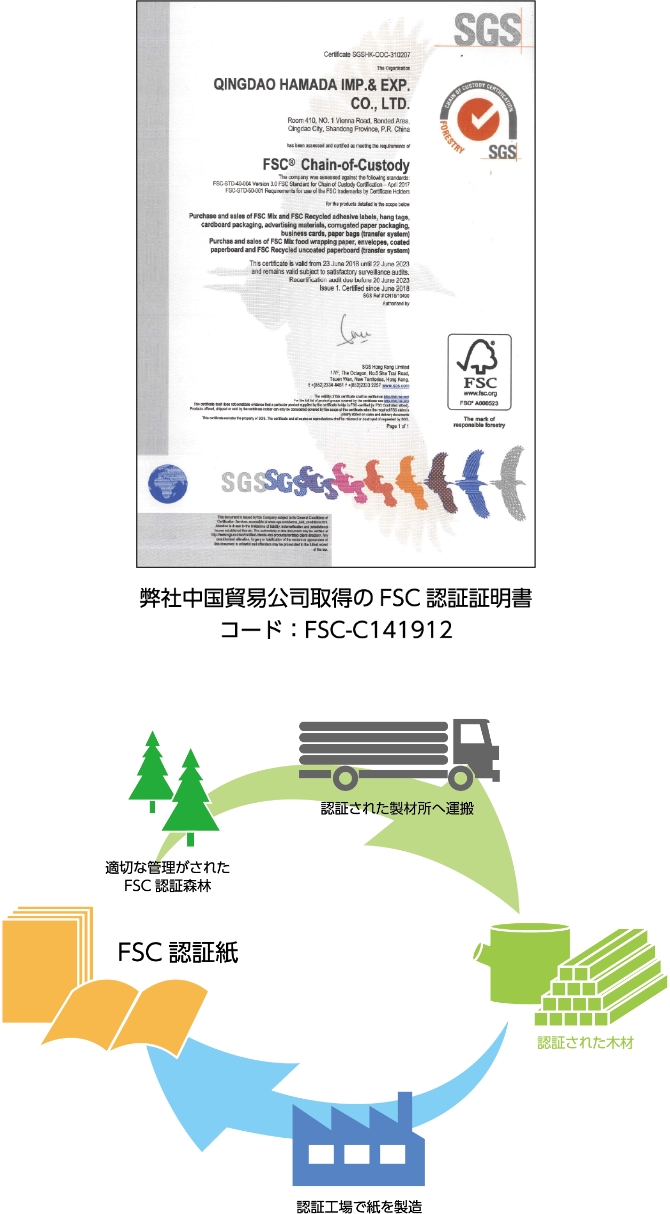Reducing carbon dioxide emissions can be achieved by using plant-derived resins (mainly sugarcane) as raw materials for plastic bags and containers.

Eco-friendly polyethylene has attracted much attention as a plant-derived plastic, mainly made from sugar cane. Since the carbon dioxide absorbed by sugarcane during the growth phase is emitted at final disposal, it is a carbon-neutral plastic.
The use of Eco-friendly PE can save oil resources.
Moreover, it is also versatile and can be used without changing the cost and availability of traditional plastics by partially blending it into a universal plastic.

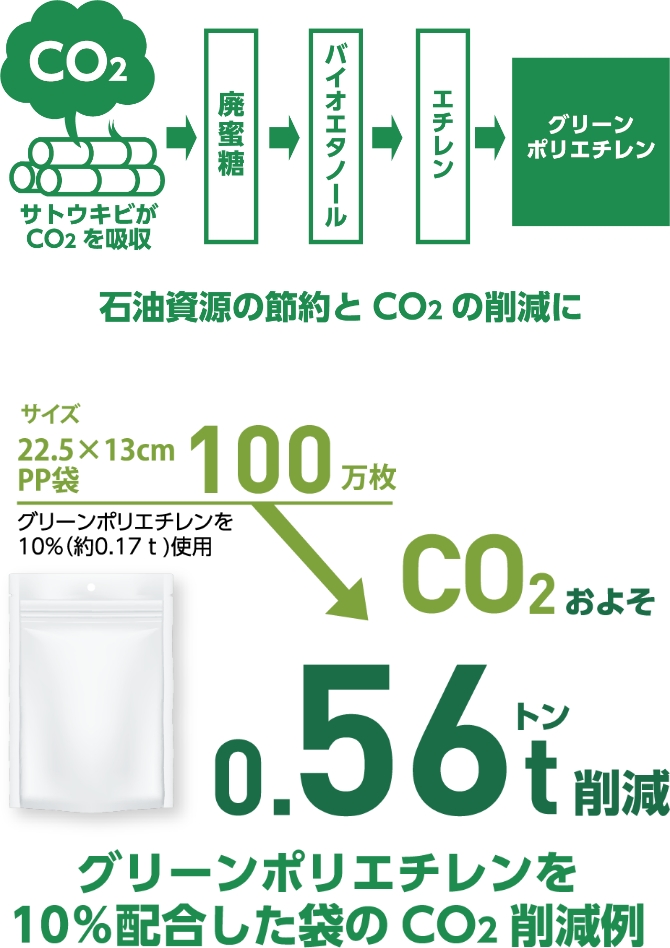
Eco-friendly packaging materials can be made from used plastic bottles collected in the market.
Recycled resin is used as a raw material for the production of films.

It is an Eco-friendly material made by recycling used PET bottles, which can be said to be representatives of plastic waste, into packaging film.Since more than 80% of the film uses PET bottles collected from the market, CO2 emissions can be reduced by about 24% compared with PET film purified directly from petroleum, and more than 80% of petroleum resource raw materials can be saved.

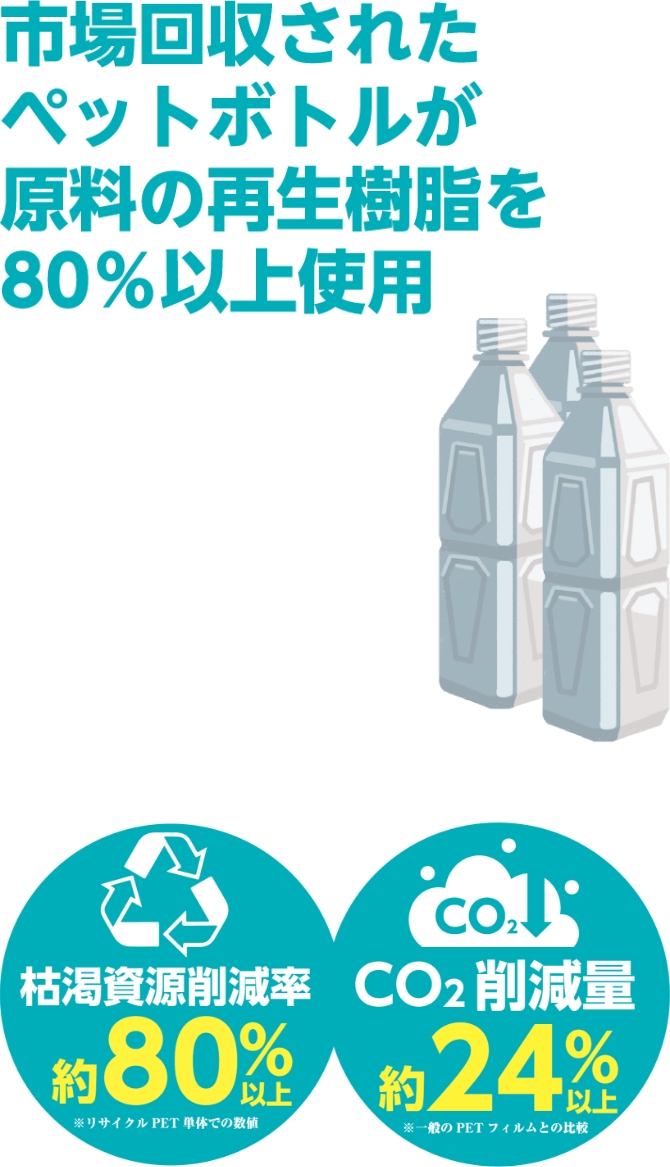
By replacing plastics that pollute the oceans and soil with biodegradable materials,We will keep the beauty of the nature.

Biodegradable plastics can be used just like regular plastics, and after use, they decompose into water and carbon dioxide and circulate in nature under the operation of microorganisms in nature. It has attracted worldwide attention as a solution to the problem of marine dumping and micro-plastics.
Our company can produce plastic molded products such as spoons and forks and film products such as shopping bags using biodegradable plastic materials mixed with starch polyethylene resin and plant-derived raw materials (corn, etc.).

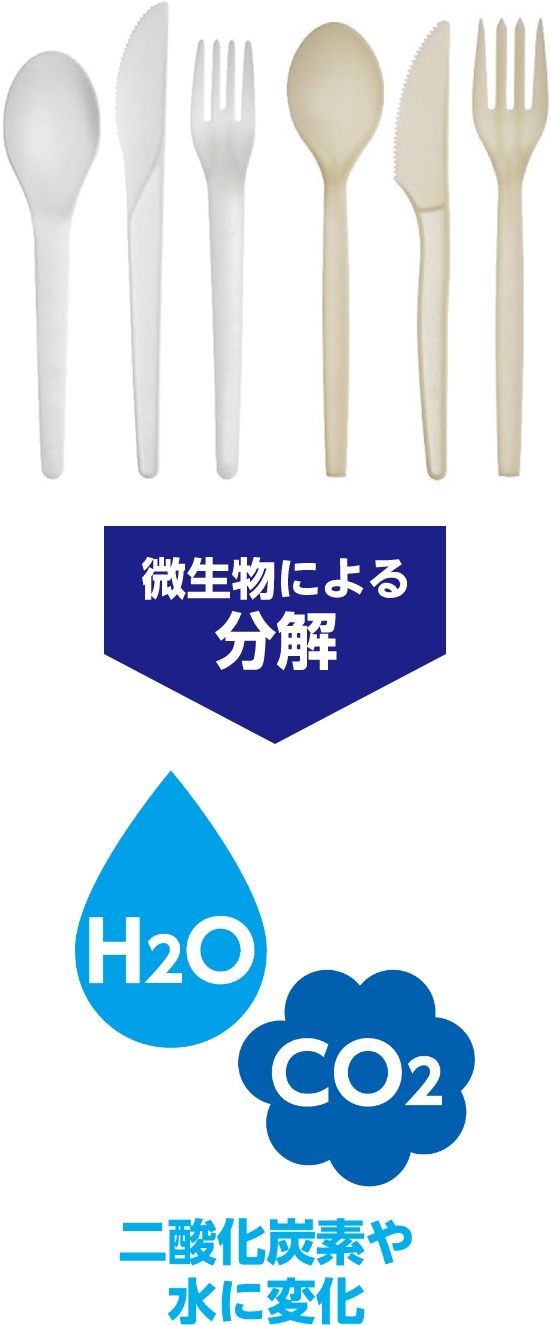
We can use waste, paper and renewable waste to prepare Eco-friendly materials as an alternative to plastics made from petroleum, which is a non-renewable resource.

One way to save petroleum resources is to mix different materials into existing plastics. Save oil resources by mixing easily recyclable limestone and agricultural waste. Mainly injection molded products and sheet products can be used as a substitute for paper.
Rice husks discharged as agricultural waste are mixed with oil palm husks. Carbon neutrality can be achieved by mixing plants that absorb carbon dioxide through photosynthesis, helping to reduce petroleum resources and agricultural waste.


Petroleum, a kind of depleting resource. Eco-friendly materials using waste, paper and renewable waste instead of petroleum plastics.

To address the problem of plastic waste, we have started an initiative to consider the possibility of packaging using paper-based materials.
By switching from existing plastic packaging to paper packaging, it is not only possible to be Eco-friendly, but also to create different designs and expressions, and to unleash the potentials of new products.
Lamination can impart water and oil resistance to the paper.

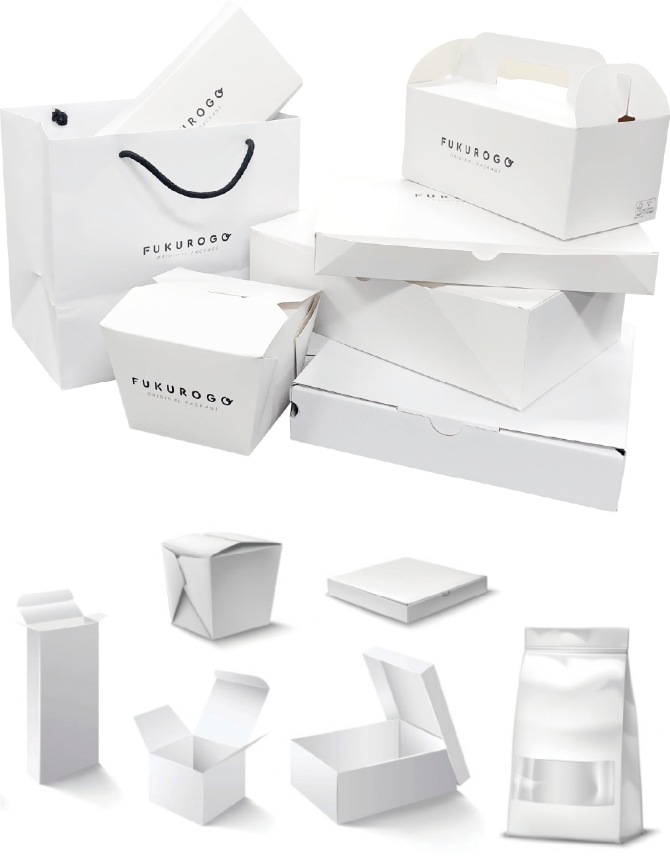
Instead of petroleum-derived printing inks, which are said to cause air pollution, printing inks made from plant-derived ingredients such as soybeans are used.

Printing inks that use traditional petroleum-based solvents contain volatile organic solvents (VOC), which can cause air pollution and health risks for workers. Eco-friendly printing inks are becoming industry standards.
Such ink uses more than 20% fats and oils produced from plants as well as waste cooking oil. Compared with traditional petroleum-based printing inks, they are eco-friendly and easy to recycle.
We can use it for printing paper products and display the plant printing ink logo certified by the Japan Ink Industry Association.

Plant-derived ingredients obtained from trees, seeds, rice bran, etc. contain at least 10% solids in the ink
Like plant oil printing inks, it is expected to reduce volatile organic compounds and carbon dioxide through carbon neutrality. We can use it to print on film.
